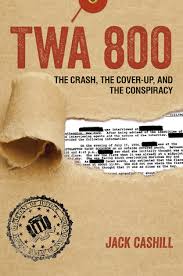Bloody New Stage in Ireland’s Self-Mutilation
![]()

Order Jack Cashill's latest book, TWA 800: The Crash, the Cover-Up, and the Conspiracy
![]()

About Silenced: Flight 800
and the Subversion
of Justice (DVD) -
-Buy the Silenced DVD-
![]()
© Jack Cashill
May 29, 2018 - AmericanThinker.com
"A nation that kills its own children has no future," said Pope John Paul II. If that be true, the Republic of Ireland signed away not only its future on Friday, but also the last vestiges of what had been the most distinctive and morally coherent culture in Europe.
For better or worse, I have been able to witness the transformation up close. I first visited the country in the early 1970s as a student hitchhiker and came back a year or so later for a more extended stay. In the early 1990s, my family and I spent the better part of a year in Galway, in the west of Ireland, where my wife taught at the city’s university.
Like most Americans of Irish descent, I felt a certain attachment to the country, and during that year in Ireland I had a chance to explore it. Although the churches were not quite as full as they were in the 1970s and the girls not quite as chaste—or so I was told—not much appeared to have changed in the twenty years since my last extended stay.
In the early 1990s, there was still no real attempt to separate church and state. Some 93 percent of the population claimed affiliation with the Roman Catholic Church, "the Church.” More than 60 percent attended Mass weekly. The Church oversaw the great majority of "public schools," including the schools my daughters attended, and prayer was a staple even in those it did not.
The church hierarchy took an active interest in national affairs. Partly as a result, divorce then was not merely illegal; it was unconstitutional. Abortion was not merely unconstitutional; it was unthinkable. "Choice" meant that women should have the option to leave the country for an abortion.
"Ho, ho,ho, ho," chanted a small, fringe group at a rally in Galway before a national referendum that year on abortion, "women have the right to go." In the referendum, they won this right for the first time, although some of the rural counties voted heavily against it.
Throughout Ireland's troubled history, the Church had been a stubbornly persistent source of both affirmation and identity. It was the Church that endowed the Irish with their oddly fatalistic good cheer; the Church that taught them to endure the grey and to seek light in the eternal. This other-worldliness helps explain the gallantly hopeless uprisings that dot Irish history as regularly the beads on a Rosary.
From the beginning, the Catholic Church in Ireland adapted well to pagan Celtic realities. Unlike many Christian sects, it offered no serious resistance to escapist pleasures like drinking, dancing and gambling. Usually, in fact, quite the opposite. A local bingo parlor in Galway, for instance, offered a "pilgrimage to Lourdes" as its weekly grand prize. And no sacrament went uncelebrated or untoasted, the Last Rites included.
My younger daughter made her First Communion in Galway. Afterwards we had a reception much as we did for my older daughter who made her First Communion in Kansas City. Each started at 2 p.m. The Kansas City reception was over by 4 p.m. In Galway, at 11 p.m., I had to throw all the revelers out. To offer an open bar in Ireland, I learned, can be a dangerous proposition.
My favorite picture of our daughters I took in Galway in 1992. The photo captures them, seven and twelve respectively, on their way to school, each looking smart and proper in her jumper, sweater and natty little tie.
By 2005, when my wife had another teaching gig in Galway, I would have had to look mighty hard to find this kind of imagery. In the new age of ample discretionary income and open rebellion against the old order, schoolgirls wore slacks, uniform only in their slovenliness and their increasing broadness abeam. The girls, it seemed, were symptom of Ireland’s increasingly obvious rush to become just another crappy little European country.
To be fair, some of the change made sense. Starting roughly in 1993, Ireland decided to throw off its sluggish, socialist past and join the modern world. It lowered the corporate income tax, cut the capital gains tax in half, kept the unions in check, and began to deregulate. With an educated, English-speaking workforce, Ireland came to serve as the ideal American gateway to doing business in Europe and, increasingly, as a self-generating economic engine.
The so-called “Celtic Tiger,” however, only aggravated the nation’s moral self-mutilation. In the United States, free market forces typically align themselves with the cultural right. In Ireland, they aligned with the cultural left, much as they do, say, in Silicon Valley. In 2005, for instance, the media reported the Dublin opening of a huge, 18-pole, British lap-dancing enterprise as proudly and shamelessly as a small market American city might announce the landing of an NBA franchise.
Now with more income and more access to the larger world, the Irish media and cultural elite yielded increasingly to the sweet siren song of imperial progressivism. Embarrassed by Ireland’s traditional values, these influential folks imported the whole enchilada of new values concocted in the U.S. and codified in the E.U.--unrestricted sexual freedom, radical feminism, gay rights, divorce, alternative family structure, open borders, even anti-Americanism. With their lock on what the Irish heard and read, they largely shamed their fellow citizens into acceptance or silence.
In the zero-sum spirit of this imported agenda, the Irish chattering classes had to identify an internal enemy to rebel against. In Britain and the United States, that enemy was the dead white male with his racist, colonial urges. Lacking such a history, the Irish chatterers singled out the most powerful force of tradition within their own country, and that just happened to be the Catholic Church.
The Church that was pounded daily in the media was not the one that built the schools and the hospitals, not the one that shaped the Irish character and “saved civilization,” but the one that slowed the sexual revolution.
Unfortunately, some of the weaker clergy, caught up themselves in the “winds of change,” were discreetly enabling the sexual revolution. As they did in America, the same media that cheered Roman Polanski and embraced Harvey Weinstein, focused their fury on wayward priests. They did this consciously to undermine the Irish Church’s authority on moral issues, especially the one issue on which the Irish stubbornly refused to yield, abortion.
Scarcely a day went by during my 2005 visit that the state owned broadcast media and the two major newspapers were not recalling some injustice, real or imagined, past or present, and carrying on about it. The chatterers encouraged this historically stoic people to grouse and point fingers, and many did.
One typical afternoon on national talk radio I listened as caller after caller recounted some unpleasantness from his or her Catholic childhood—a slap, a grope, a mean stare, bad food at the home for unwed mothers, indeed the very need for such a home when the rest of Europe was treating itself to abortion and the pill.
Those Irish who resisted progressive trends—in 2005, perhaps still the majority—had scarily little voice. There was no Irish Rush Limbaugh, no Fox News, no National Review, nothing close.
The range of acceptable opinion in the Irish media on issues as important as sex, crime, family, faith, feminism, homosexuality, immigration, war, and peace was as narrow as a country lane. In its most orthodox moment, the Irish Catholic Church could not have been more oppressive or vengeful than the monolithic Irish cultural establishment of the early twentieth century.
The left had its way, and the results were as inevitable as the winds off Galway Bay. In the decade after my 2005 sojourn, for instance, syphilis and chlamydia rates doubled, and gonorrhea increased by a factor of four. In Europe, only the UK had a higher rate of STDs than Ireland.
As to HIV, despite the almost universal availability of condoms, more than 500 new cases of HIV were diagnosed in 2017, the highest numbers since records began. Roughly 10 percent of these cases were attributed to drugs, which were killing more than 200 Irish people each year through overdoses.
Even before the abortion referendum, the Irish were giving up on the future. Between 2008 and 2017, the Irish birth rate declined by nearly 20 percent, and foreign nationals were responsible for nearly a quarter of live births. In 2017, unmarried women accounted for nearly 40 percent of live births, nearly 60 percent in some cities with all the attendant crime and child abuse problems.
In 2017, there were roughly 104 boys born in Ireland to 100 girls suggesting the first hint of artificial sex selection through abortion. That boy-girl ratio will surely tick upwards as more parents/ mothers start using their local abortion clinic to assure a boy in a one-child family.
The media tell us Friday in Ireland was a “great day for women.” If they had a voice, those thousands of little girls to be killed in the womb just might take exception.

